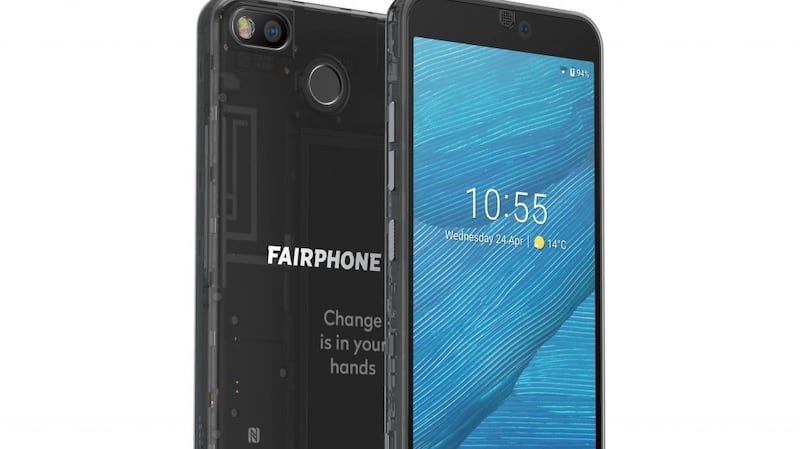Like climate activist Greta Thunberg, environmental scientist Dr Tara Shine is besieged by people asking what they can do to address the climate crisis, beyond being told to turn off the light.
And while there is a blame game that points the finger at individuals and away from big carbon polluters, Shine believes in the power of the individual in remodelling societies to ensure a sustainable way of living.
She spent 20 years on the front line of international and national climate policy trying to identify triggers for systemic change, "but all that anybody wanted to talk to me about was 'what can I do?'" It led to her setting up Change By Degrees to provide sustainability leadership.
Now it has resulted in publication of How to Save Your Planet One Object at a Time. At a time when many are increasingly aware of the impact their lives have on the environment, she accepts people can still find alternative consumer choices confusing, due to “mixed messages, information overload, or a misplaced perception that greener choices are more expensive, time-consuming or are somehow inferior”.
Perfect guide
She has come up with almost 100 everyday objects that can easily be changed, from teabags and batteries, to cotton buds and cosmetics. Interspersed throughout her book are mini-guides on bigger issues such as sustainable food; waste, energy and fast fashion.
On first immersion, it feels like the perfect guide for anyone looking to be more environmentally aware with remarkable detail for those close to bottom of the action curve. But for this writer – in that category – a sense of an overwhelming demand soon emerges.
Anticipating this, Shine advises one action at a time. If the change becomes a habit, move to the next. By way of reassurance, she adds: “I have not done everything in this book.” She often forgets to bring her reusable dry-cleaning cover to her dry cleaners, while her husband cannot stand bamboo toothbrushes.
The changes are all achievable, sustainable and many even save money, she says. Start with easy bits; harder choices follow such as taking fewer flights or installing roof-top solar panels. And yes, less stuff is good.
While there is tension between individual action and need for transformation, “acknowledging the power of every intentional action catalyses more action”, she says.
But Covid-19 casts a dark shadow. The key lesson is "you cannot postpone the climate crisis", Shine insists. Though the world is stressed "we could be hit at any time by a climate emergency on top of this" what if "a crazy monsoon" hit India right now? What if Ireland had another Hurricane Ophelia tomorrow?
The health and economic crisis is an opportunity to break the rules of economics and political science and do things differently in the best interests of the planet and humankind.
She doesn’t believe the climate movement will be defused by what has just happened. It is preparing for the right moment to re-emerge “but like everything it has to reposition itself” by reaching beyond its core – while seeking greater equality.
Collective action
It also has to realise building “climate resilience” is most important within a really strong social and economic system. And the message has to resonate with broader society, “to get more people to see themselves as creating the change we need and want to pass on to our kids”.
We are in a post-second World War moment, Shine says. The choice is between collective action to generate a carbon-neutral planet, or a turning inwards. “I don’t see an in between, especially when climate change does not obey borders. It’s a worrying time.”
How to Save Your Planet One Object at a Time is published by Simon & Schuster
TARA SHINE’S SMALL SOLUTIONS
Shoes from the sea: Trainers made from recycled plastic including ocean plastic and retrieved ghost fishing nets are "turning an environmental problem into a new pair of shoes".
Battery-free electric toothbrush: The "Be" toothbrush is run on renewable energy generated when you twist the base of the handle to wind its spring motor.
Sustainable tights: "Throwaway, cheap and polluting tights" dominate the hosiery market. Swedish Stockings offers a nylon and elastane product that is 100 per cent sustainable. They also take back old tights with a view to future recycling once the technology is available. swedishstockings.com

Phone: The smartphone's environmental impact is immense, from the extraction of raw materials to the "mountain of waste" it generates when we upgrade. A Fairphone is designed for durability; so it can be repaired, refurbished and reused. Batteries and camera parts are replaceable and work on open-source software. Fairphone.com
Wet wipes: Their surge in popularly has contributed to the fatberg phenomenon; "nasty subterranean masses that block sewers". A solution: a reusable cotton cloth or natural sponge and some warm water, or washable and reusable "wipes" kept in a plastic box or bag once moistened. As a last resort, look for plastic-free wipes made from natural fibres, and "always bin wipes".
A series of podcasts on How to Save Your Planet One Object at a Time are available at https://soundcloud.com/how-to-save-your-planet
The challenge for families in How to Save Your Planet from Home is available at https://www.youtube.com/watch?v=mjrQ8HV2RX0











